On the road to Paris
Updated: 2015-09-05 02:54
By Amy He(China Daily USA)
|
|||||||||
Political consensus
“I think the aim of the New York summit is not to get detailed actions from each country, but more to just secure a strong political consensus (from them),” said Haibing Ma, China program manager at the Worldwatch Institute.
“It’s to further build up the momentum to the Paris agreement at the end of the year — it’s not to negotiate. They come here as a symbol and show the world they have this strong commitment and strong willingness to limit carbon emissions in the future. I think it’s more like a universal political gesture than a detailed action plan,” he said.
“Any conversations which can take place in advance of the actual talks is extremely constructive, so that we can avoid any misunderstandings along the lines of what we may have experienced in Copenhagen,” she said. Lewis is referring to the climate talks in 2005 in the European city that failed to yield more than two pages of the Copenhagen Accord, where nations agreed to discuss climate again in the future and to reach a decision then.
“My understanding is President François Hollande and Secretary-General Ban Ki-moon will be holding a lunch or dinner with some of the leaders to talk about climate, but I don’t think anyone expects breakthroughs in New York in September on these issues,” Meyer said.
“But because you have so many of these leaders in one place at one time, there’s an opportunity for a lot of bilateral conversations between leaders that can help increase understanding. You’re more likely to get signals coming out of the finance ministers in October or the G20 meeting in November, or some of the gatherings after New York, than you are at the General Assembly,” he added.
International collaboration
During the Paris talks, the experts expect that each country will lay out a detailed climate plan and an estimation of collective global efforts. Worldwatch Institute’s Ma said that more information is expected on the measurement, reporting and verification systems, which are systems that countries have in place to monitor and collect data on carbon emissions.
In addition, further talks are expected on the Green Climate Fund (GFC), a fund within the UNFCCC that collects and distributes money from developed economies to aid in climate efforts of developing economies.
“Among the climate community here, we’re expecting strong progress on the finance side. We expect the Green Climate Fund to be fully operational with a large chunk of money that will be ready to be directed to countries that most need it. We expect to see a clearer text within the agreement on how the developing countries should be supported from the international community,” Ma said.
The Green Climate Fund, which has headquarters in Incheon, South Korea, was established in 2010, with developed countries pledging to raise $100 billion every year by 2020 to help developing countries tackle climate change problems.
Some developing economies, like India, have said that they do not believe the current amounts being generated for the fund are enough to fight climate change.
The US has pledged it will contribute $3 billion to the fund, and 10 other countries have pledged $3 billion toward the fund as well. The fund is expected to be up and running before the Paris talks, according to Ban.
“I think it’s too early to say for sure what will be achieved in Paris, but now that most of the major economies have either already put forth their INDCs or signaled that they’re on the way, that we’re moving in the right direction,” said Georgetown’s Lewis.
Though China’s INDC proposal has been well-received, experts agree that there are challenges ahead.
China said it would peak emissions but did not provide an absolute cap, and instead said it will aim to reduce carbon emission per unit of GDP, meaning that the amount of emissions will fluctuate depending on the economy’s growth.
“From a global carbon budget perspective, it’s hard to know how to score China’s commitment on that front, because you don’t know how the economy is going to perform over the next 15 years. You can make assumptions based on current projected growth rates, but of course there’s no guarantee that those won’t be higher or lower,” Meyer said.
Price’s Tang said that it “makes sense” for a country of China’s size to not focus on absolute total reduction. “You don’t want to impose an absolute amount of reduction — that is not viable, because China simply cannot do that,” he said.
The country said in its INDC that by 2014, carbon emissions per unit of GDP have already been lowered by 33.8 percent compared to 2005 levels.
US standard
The US, on the other hand, has proposed absolute reduction in its INDC by 26 to 28 percent below 2005 levels by 2025.
“This is easier for the US to do, because it’s expecting maybe 2 or 3 percent GDP growth for whatever foreseeable future. For them, you’re not talking about a big increase in the total economy, year after year, so it’s easier for them to pledge to achieve total reduction. As long as you increase efficiency for each GDP output unit, you can easily achieve absolute reduction,” Tang said.
Another obstacle that the Chinese government may face is in the enforcement of climate change-related regulation, which is currently set out by the central government but is enforced at the provincial and city levels. Officials who often have to hit economic growth targets as well as environmental ones sometimes prioritize over climate-related ones.
“The most difficult types of regulatory enforcement are really those that are really local in nature. So one example is water pollution. That’s very difficult for the national government to deal with because a lot of it is really local. If you have one really bad factory in the local river system that is polluting everything, then it’s very difficult for Beijing to do anything.
In China, whatever agreements the national government has, at the end of the day, implementation is going to be at the provincial, county, city level,” said Tang, who studies Chinese governance.
Clayton Munnings, research associate at Resources for the Future, said that China’s challenge lies not necessarily in creating policies that will help it peak emissions, but ensuring effective implementation and coordination of policies already in place.
“Seven regions in China now operate cap and trade pilots with the intention of informing the design of a national cap and trade program, slated to launch in 2016,” he told China Daily.
“While local policymakers have done an impressive job in designing and implementing these regional cap and trade markets in a remarkably short amount of time, the pilots risk overallocation of allowances, suffer from low liquidity and have faced difficulties in ensuring compliance.”
A national cap and trade program — a market-based approach used to give economic incentives to those who achieve pollutant reductions — is needed at the national level, Munnings said. Price’s Tang agreed that many of China’s climate policies need to be enforced at the national level, but the nature of the governing system makes that difficult.
“It’s part of the Chinese governance system. China’s system works where one level pushes another level — ultimately it’s not just environmental protection, it’s almost any policy area, it’s the nature of the system where the central government makes policy, sets up targets, and relies on provincial, city and county township governments to do the job,” he said.
Climate experts said that Xi’s state visit to the US will signal US and China’s further bilateral cooperation. It will be another chance for the two presidents to touch base heading into Paris and talk about how the two largest economies and two largest emitters can continue to play a leadership role “as two of the most pivotal countries” making sure that the Paris talks reach a constructive outcome, Georgetown’s Lewis said.
Contact the writer at amyhe@chinadailyusa.com
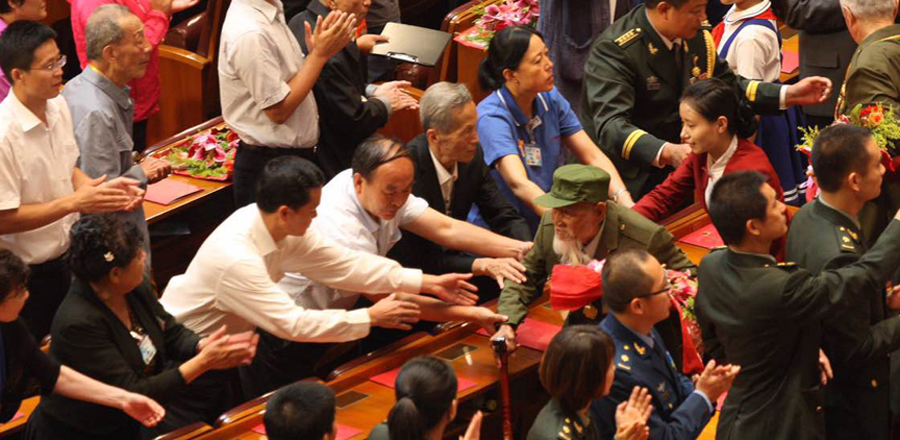
 Veterans attend V-Day anniversary gala show
Veterans attend V-Day anniversary gala show
 Military helicopters write number 70 high in the sky
Military helicopters write number 70 high in the sky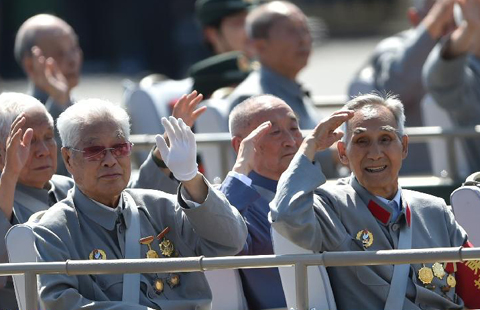
 Salute to veterans
Salute to veterans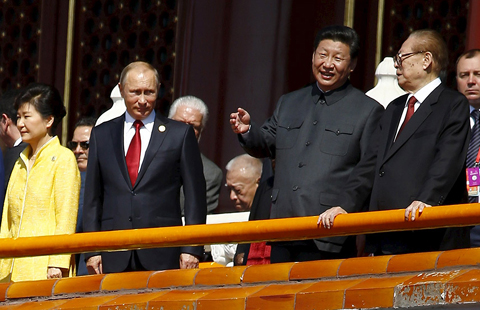
 Xi attends the ceremony with other leaders
Xi attends the ceremony with other leaders
 Armored vehicles roll down the parade in huge roar
Armored vehicles roll down the parade in huge roar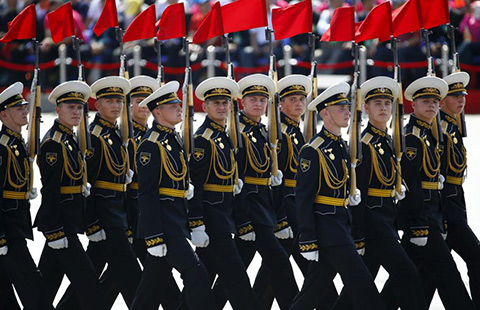
 Foreign troops celebrate with Chinese comrades
Foreign troops celebrate with Chinese comrades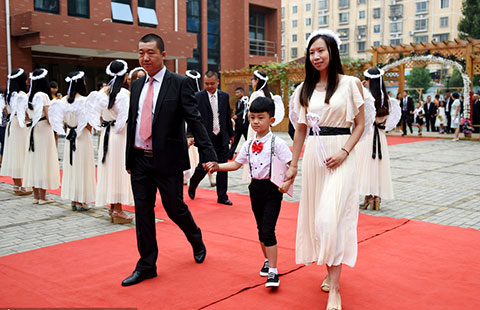
 Red carpet ceremony for first grade kids
Red carpet ceremony for first grade kids
 Kashgar old city in Xinjiang is well preserved
Kashgar old city in Xinjiang is well preserved
Most Viewed
Editor's Picks

|

|

|

|

|

|
Today's Top News
Sino-Russian investment fund eyes more deals
Predicting Internet's future without a crystal ball
Silk Road Fund to expand ties with lenders
Intl community echoes Xi's speech at V-Day commemoration
Envoy hails New York resolutions
Nation's military power grows but still trails behind
China to cut troops by 300,000: President Xi
Springfield gets Chinese railcar plant
US Weekly

|

|








